I am using TF2 Object Detection API to train a ssd_resnet50. Each time I train it I get different losses and evaluation scores (tensorboard logs -- graphs).
I am using VOC2012 dataset to retrain a pretrained ssd_resnet50_v1_fpn_640x640_coco17_tpu-8 model. I have religiously followed the API setup using this link: https://tensorflow-object-detection-api-tutorial.readthedocs.io/en/latest/training.html.
- Organised my workspace/training files
- Prepared/annotated image datasets
- Generate tf records from such datasets
- Configured a simple training pipeline
- Trained a model and monitored its progress
Everything is working just fine except for the reproducibility. In order to train a customized model I am using the configurations mentioned below (pipeline.config).
model {
ssd {
num_classes: 20 # Set this to the number of different label classes
image_resizer {
fixed_shape_resizer {
height: 640
width: 640
}
}
feature_extractor {
type: "ssd_resnet50_v1_fpn_keras"
depth_multiplier: 1.0
min_depth: 16
conv_hyperparams {
regularizer {
l2_regularizer {
weight: 0.00039999998989515007
}
}
initializer {
truncated_normal_initializer {
mean: 0.0
stddev: 0.029999999329447746
}
}
activation: RELU_6
batch_norm {
decay: 0.996999979019165
scale: true
epsilon: 0.0010000000474974513
}
}
override_base_feature_extractor_hyperparams: true
fpn {
min_level: 3
max_level: 7
}
}
box_coder {
faster_rcnn_box_coder {
y_scale: 10.0
x_scale: 10.0
height_scale: 5.0
width_scale: 5.0
}
}
matcher {
argmax_matcher {
matched_threshold: 0.5
unmatched_threshold: 0.5
ignore_thresholds: false
negatives_lower_than_unmatched: true
force_match_for_each_row: true
use_matmul_gather: true
}
}
similarity_calculator {
iou_similarity {
}
}
box_predictor {
weight_shared_convolutional_box_predictor {
conv_hyperparams {
regularizer {
l2_regularizer {
weight: 0.00039999998989515007
}
}
initializer {
random_normal_initializer {
mean: 0.0
stddev: 0.009999999776482582
}
}
activation: RELU_6
batch_norm {
decay: 0.996999979019165
scale: true
epsilon: 0.0010000000474974513
}
}
depth: 256
num_layers_before_predictor: 4
kernel_size: 3
class_prediction_bias_init: -4.599999904632568
}
}
anchor_generator {
multiscale_anchor_generator {
min_level: 3
max_level: 7
anchor_scale: 4.0
aspect_ratios: 1.0
aspect_ratios: 2.0
aspect_ratios: 0.5
scales_per_octave: 2
}
}
post_processing {
batch_non_max_suppression {
score_threshold: 9.99999993922529e-09
iou_threshold: 0.6000000238418579
max_detections_per_class: 100
max_total_detections: 100
use_static_shapes: false
}
score_converter: SIGMOID
}
normalize_loss_by_num_matches: true
loss {
localization_loss {
weighted_smooth_l1 {
}
}
classification_loss {
weighted_sigmoid_focal {
gamma: 2.0
alpha: 0.25
}
}
classification_weight: 1.0
localization_weight: 1.0
}
encode_background_as_zeros: true
normalize_loc_loss_by_codesize: true
inplace_batchnorm_update: true
freeze_batchnorm: false
}
}
train_config {
batch_size: 8 # Increase/Decrease this value depending on the available memory (Higher values require more memory and vice-versa)
data_augmentation_options {
random_horizontal_flip {
}
}
data_augmentation_options {
random_crop_image {
min_object_covered: 0.0
min_aspect_ratio: 0.75
max_aspect_ratio: 3.0
min_area: 0.75
max_area: 1.0
overlap_thresh: 0.0
}
}
sync_replicas: true
optimizer {
momentum_optimizer {
learning_rate {
cosine_decay_learning_rate {
learning_rate_base: 0.03999999910593033
total_steps: 25000
warmup_learning_rate: 0.013333000242710114
warmup_steps: 2000
}
}
momentum_optimizer_value: 0.8999999761581421
}
use_moving_average: false
}
fine_tune_checkpoint: "pre-trained-models/ssd_resnet50_v1_fpn_640x640_coco17_tpu-8/checkpoint/ckpt-0" # Path to checkpoint of pre-trained model
num_steps: 25000
startup_delay_steps: 0.0
replicas_to_aggregate: 8
max_number_of_boxes: 100
unpad_groundtruth_tensors: false
fine_tune_checkpoint_type: "detection" # Set this to "detection" since we want to be training the full detection model
use_bfloat16: false # Set this to false if you are not training on a TPU
fine_tune_checkpoint_version: V2
}
train_input_reader {
label_map_path: "annotations/label_map.pbtxt" # Path to label map file
tf_record_input_reader {
input_path: "annotations/train.record" # Path to training TFRecord file
}
}
eval_config {
metrics_set: "coco_detection_metrics"
use_moving_averages: false
}
eval_input_reader {
label_map_path: "annotations/label_map.pbtxt" # Path to label map file
shuffle: false
num_epochs: 1
tf_record_input_reader {
input_path: "annotations/test.record" # Path to testing TFRecord
}
}
I tried a few things to achieve reproducibility:
- Set a global seed in various modules across the training pipeline
- I tried setting up the operation-based seed for say shuffle, data augmentations etc.
- Manually setting attributes coming from .proto files, like shuffle = False in build() function of Tensorflow/models/research/object_detection/builders/data_builder.py module etc.
- De-selecting or removing data_augmentation_options from pipeline.config file altogether.
The graphs above show 2 separate training runs (everything is kept the same in both experiments: global seeding is done in data_builder.py -- tf.random.set_seed(1234), no data augmentation selected i.e. "data_augmentation_options" removed from pipeline.config, data shuffle and related attributes adjusted as mentioned in point 3)
# Operations that rely on a random seed actually derive it from two seeds:
# the global and operation-level seeds. Adding this on top of a module sets the global seed.
tf.random.set_seed(1234)
# Switch off shuffle, config.filenames_shuffle_buffer_size
config.shuffle = False
# Make number of readers to zero
config.num_readers = 0
# Set sample_from_datasets_weights to zero
config.sample_from_datasets_weights = 0
